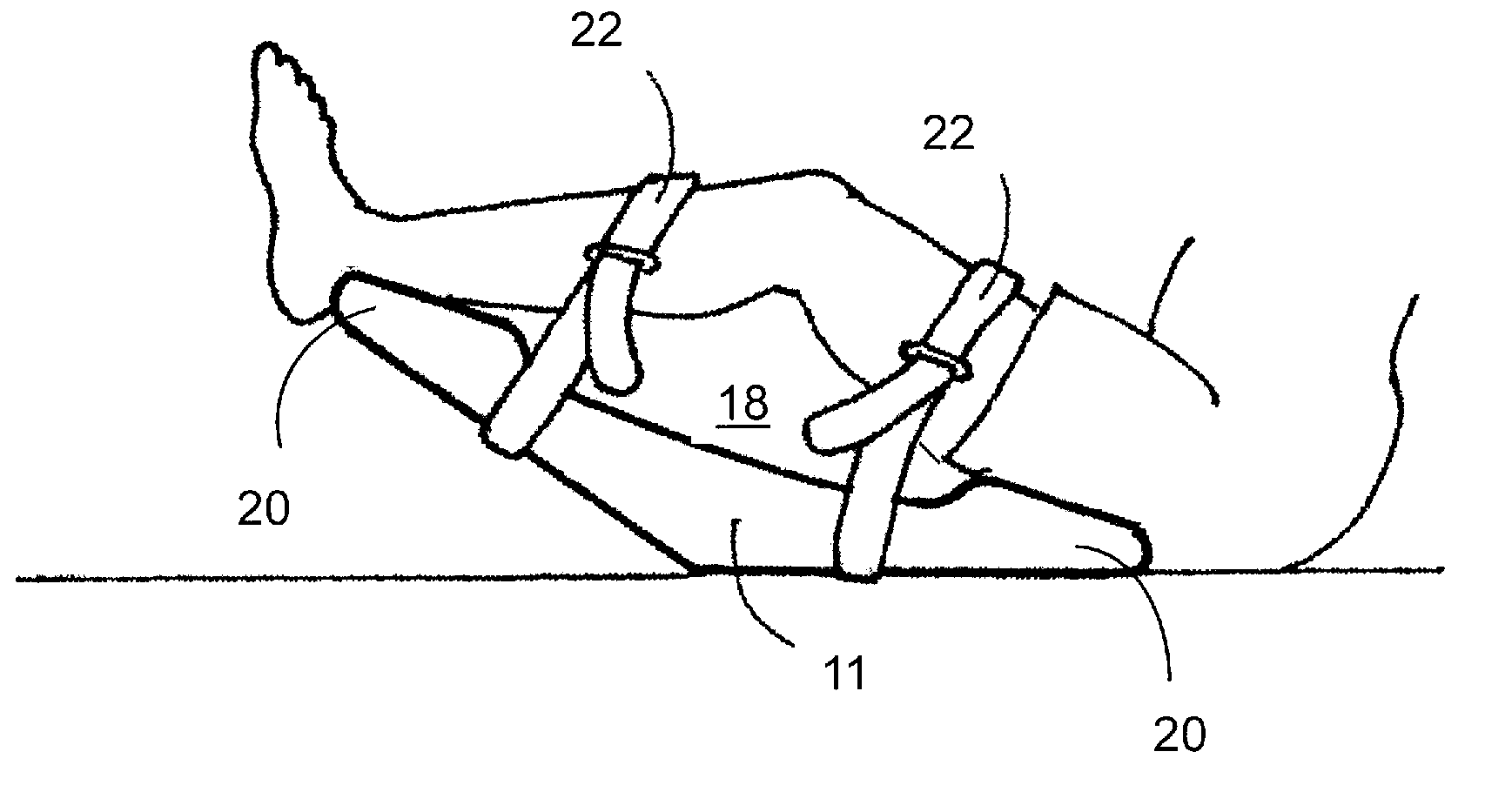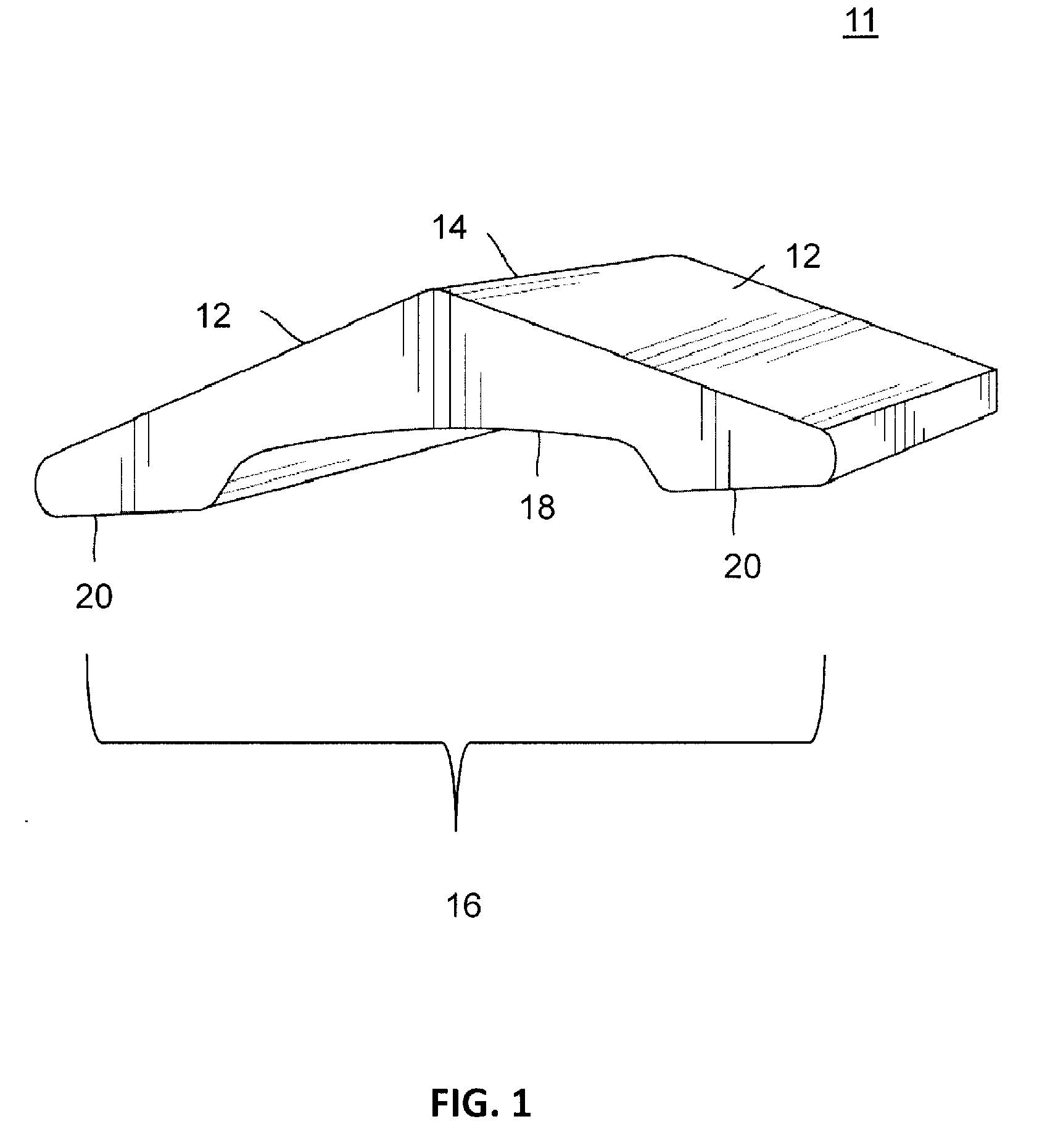Methods and Devices for Treating Pathological Conditions of the Human Knee
a technology of human knee and treatment method, which is applied in the field of human knee pathological conditions treatment system, can solve the problems of not being particularly tailored to knee injuries, too creating insults in the process, and not operating to strengthen muscles, so as to strengthen the quadriceps femoris muscles, prevent further injury to the knee, and strengthen the knee itsel
- Summary
- Abstract
- Description
- Claims
- Application Information
AI Technical Summary
Benefits of technology
Problems solved by technology
Method used
Image
Examples
Embodiment Construction
[0020]Methods and apparatuses provided herein treat patients suffering from a variety of medical conditions or injuries affecting the knees. Among these include osteoarthritis (OA), knee contracture, weakness of the quadriceps, bowleg deformity and knock-knee deformity, or those requiring post operative rehabilitation.
[0021]In developing such apparatuses and methods, it is an object of the present invention to provide apparatuses and methods that are non-surgical, for personal use at home, or in conjunction with physical therapy, simple to use and can be efficiently produced.
[0022]It is another object the invention to provide devices and methods that provide dual purpose exercises or dual treatments thereby reducing or eliminating the need for multiple devices for straightening and strengthening the lower extremities.
I. Passive and Active Exercise to Treat Pathological Conditions the Knee
[0023]Loss of the ability to straighten the knee and loss of muscle strength are common results ...
PUM
 Login to View More
Login to View More Abstract
Description
Claims
Application Information
 Login to View More
Login to View More - R&D
- Intellectual Property
- Life Sciences
- Materials
- Tech Scout
- Unparalleled Data Quality
- Higher Quality Content
- 60% Fewer Hallucinations
Browse by: Latest US Patents, China's latest patents, Technical Efficacy Thesaurus, Application Domain, Technology Topic, Popular Technical Reports.
© 2025 PatSnap. All rights reserved.Legal|Privacy policy|Modern Slavery Act Transparency Statement|Sitemap|About US| Contact US: help@patsnap.com



